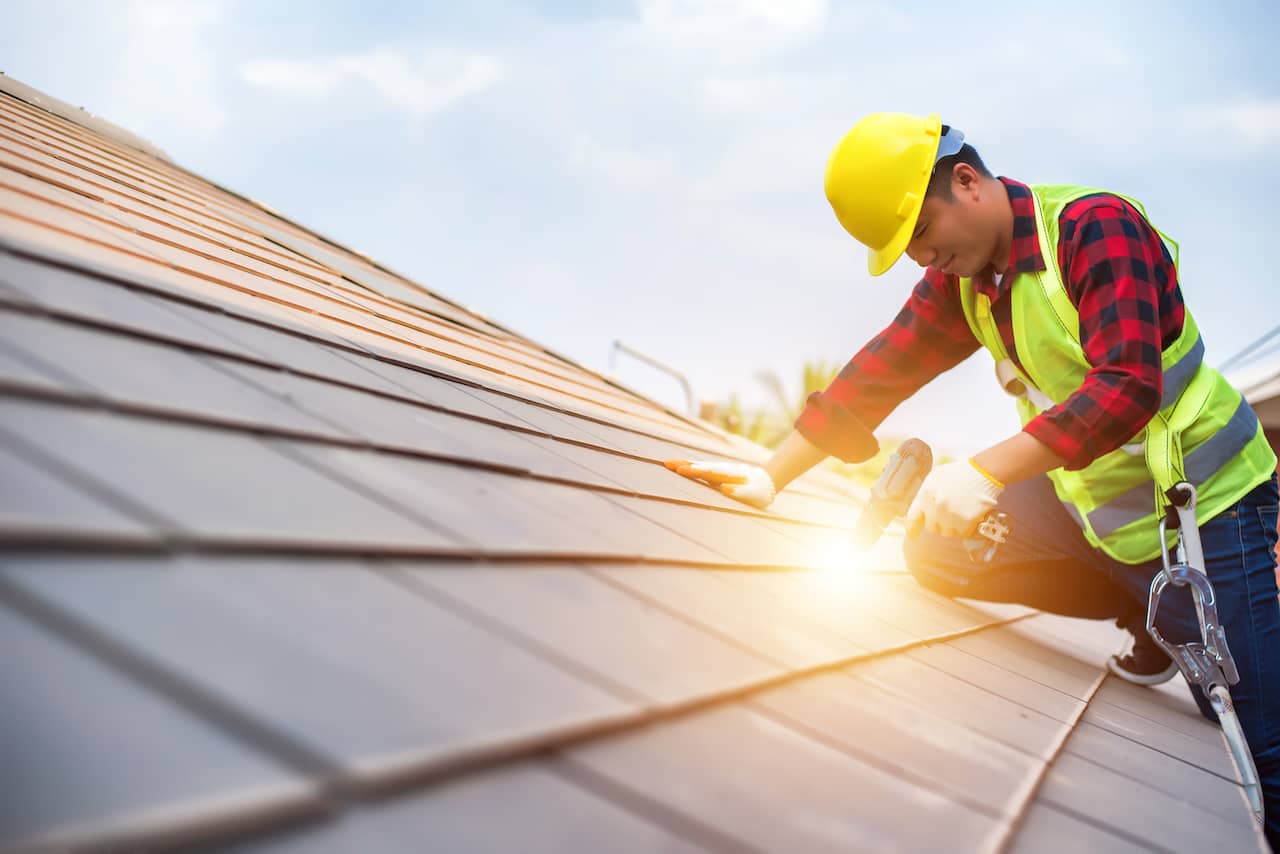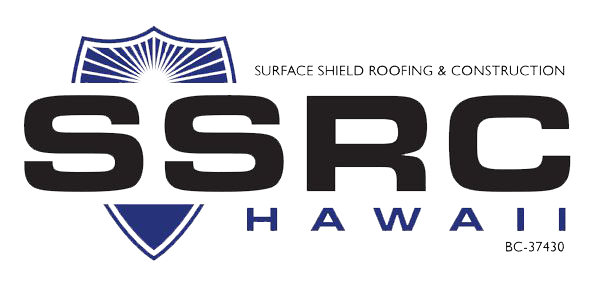Uncover Typical Roof Troubles and How to Address Them Successfully
When it comes to your roofing system, spotting troubles early can save you money and time. You may see water discolorations on your ceiling or fractured roof shingles during your regular checks. Ignoring these indications can lead to bigger concerns down the line. Recognizing exactly how to identify and address these typical roofing issues is essential for preserving your home's stability. What details steps should you take to ensure your roofing stays in top condition?
Recognizing Roof Leakages and Their Reasons

Following, examine your roofing system from the exterior. Look for missing out on or split floor tiles, rusted flashing, or damaged rain gutters.
During hefty rainfall, observe your roofing system for any kind of pooling water or drips. This can disclose leaks that might not be noticeable throughout completely dry conditions. By staying alert and routinely inspecting your roofing, you can catch leaks early and shield your home from more damage.
Taking care of Missing Out On or Damaged Roof Shingles
When you discover missing out on or harmed roof shingles, it's essential to act promptly to stop more concerns. You'll wish to recognize the extent of the damage, fix any kind of missing tiles, and consider precautionary upkeep pointers to maintain your roof covering in leading shape. Taking these steps can save you time and cash later on.
Determining Roof Shingles Damages
Although roof shingles are developed to withstand the components, they can still suffer damage over time, leading to possible leaks and costly repairs. To identify tile damages, start by evaluating your roof for missing, fractured, or crinkled roof shingles. On a regular basis checking your roofing system, specifically after serious weather, can help you capture problems early and keep the stability of your home.
Repairing Missing Out On Shingles
After finding tile damage, the next action is resolving any type of missing or damaged roof shingles immediately to avoid further issues. Start by examining the damaged location and figuring out the amount of tiles require replacement. If you can, climb onto your roofing securely, putting on ideal equipment. Eliminate any kind of broken shingles thoroughly utilizing a lever. As soon as you have actually gotten rid of the location, slide in the brand-new tiles, guaranteeing they align with the existing ones. Secure them with roof covering nails and apply roofing adhesive for added stability. Don't fail to remember to secure the sides to stop water seepage. If you're awkward with the repair service, it's important to call a specialist. Doing something about it quickly will aid preserve your roofing system's stability and expand its life expectancy.
Preventive Upkeep Tips
Exactly how can you keep your roof covering in leading form and avoid shingles from going missing out on or getting damaged? Normal examinations are crucial. Check your roof a minimum of two times a year and after serious climate. Try to find indications of wear, such as curling, breaking, or loosened shingles.
Keep rain gutters clean and devoid of debris to assure appropriate water circulation and stop tile damage. Cut looming branches to lessen the risk of them scuffing versus your roof throughout storms.
Take into consideration using a safety sealer to prolong your roof shingles' lifespan. Lastly, if you notice any type of concerns, resolve them immediately to stay clear of costly repair services later on. Taking these safety nets can save you time and cash while guaranteeing your roofing system stays durable and reputable.
Recognizing Roof Covering Air Flow Issues
Proper roof covering air flow is essential for maintaining the longevity and effectiveness of your roof covering system, as it aids regulate temperature level and wetness degrees in your attic room. Without ample air flow, you could face problems like excessive heat buildup, resulting in early tile damage, or raised moisture that can create mold development and timber rot.
To examine your roofing air flow, look for indications of overheating, such as warped tiles or a hot attic. Seek obstructed vents, which can restrict air flow and catch warm. You must ensure your intake and exhaust vents are balanced, enabling correct air exchange.
Attending to these concerns quickly can secure your roofing and save you from expensive repair work down the line. Remain aggressive in preserving your roofing's ventilation to protect your home.
Attending To Roofing Moss and Algae Development
While you might appreciate the all-natural appearance of moss and algae on your roofing, these microorganisms can result in considerable issues if left unattended. They catch dampness, which can result in shingle degeneration and leakages. To tackle this concern, beginning by eliminating any visible growth. Use a soft-bristle brush to carefully scrub away the moss and algae, bewaring not to damage your tiles.
Following, take you can try here into consideration using a specialized roof cleaner or a mixture of water and bleach to eliminate staying spores. Rinse extensively to avoid any kind of chemical damages. In addition, set up zinc or copper strips along the ridge of your roofing. As rain washes over these steels, it develops a protective obstacle versus future growth. Routine evaluations and maintenance will certainly assist stop moss and algae from returning, ensuring your roof continues to be in excellent form for many years to come.
Repairing Storm Damage and Wind Problems
After a tornado, it's essential to analyze your roofing system for damages caused by high winds and hefty rain. Start by inspecting for missing out on or broken tiles, as these are typical casualties.
Seek any type of sagging locations, which may indicate water accumulation or structural concerns. If you discover any type of debris, like branches or leaves, eliminate them carefully to stay clear of further damage. If your rain gutters are obstructed, clear them to ensure correct drainage.

For tiny repair work, you may manage it on your own, but don't be reluctant to call a specialist for extensive damages. Bear in mind, acting swiftly can conserve you from larger problems down the line, so take that evaluation seriously and attend to any type of problems asap.
Recognizing Indicators of Architectural Damage
Just how can you tell if your roof covering is enduring from architectural damage? Start by trying to find noticeable sagging or dips in your roofline. These indicators show that the underlying framework may be compromised. Next, look for cracks or gaps in the walls or ceiling, as these can indicate shifting or settling as a result of roofing concerns. Pay attention to leaks or water stains, specifically in areas where the roof meets walls. If you observe missing out on or broken tiles, it's crucial to resolve them quickly, as they can subject your roofing system to additional damage. Examine your attic for any kind of indicators of daytime glancing with, which can suggest your roofing system's honesty is at danger. Pay attention for unusual creaking or popping audios, as they might show structural stress. If you notice any one of these indications, it's time to seek advice from a roof expert for an extensive assessment.
Regular Maintenance Tips for Durability
)
Regular Assessments Relevance
Considering that a roofing is your home's first line of protection versus the components, normal assessments are essential for maintaining its integrity (roofing materials hawaii). You need to examine your roofing system a minimum of twice a year, preferably in springtime and autumn, to catch prospective problems early. Look for missing or harmed roof shingles, signs of leaks, and any kind of particles that might create problems. Pay close interest to locations around chimneys, vents, and flashing, as these prevail vulnerable points. If you see anything unusual, do not hesitate to speak to a professional for a thorough assessment. Keeping up with these examinations can stop costly repair services down the line and extend your roofing's lifespan, guaranteeing your home continues to be protected for many years to come.
Correct Gutter Maintenance
Regular roofing evaluations normally bring about the relevance of proper seamless gutter upkeep. Clean your seamless gutters at the very least twice a year to avoid clogs from leaves, dirt, and particles. If you reside in a tree-heavy area, consider checking them much more frequently. Make use of a strong ladder and wear gloves while getting rid of the accumulation. Examine your rain gutters for leaks or corrosion; they can cause water damage to your roofing and home. Ensure downspouts straight water away from your structure to stay clear of flooding. Installing gutter guards can minimize particles build-up and decrease upkeep time. Lastly, look for correct slope; gutters need to incline towards the downspouts to assure optimal drain. By complying with these tips, you'll extend your seamless gutters' life expectancy and shield your roofing.
Frequently Asked Concerns
Exactly How Can I Select the Right Roof Covering Material for My Home?
To choose the best roof covering material for your home, think about environment, resilience, and aesthetic appeals. Study alternatives like asphalt tiles, metal, or ceramic tile. Think of maintenance demands and budget to locate what fits you ideal.
What Are the Indications I Need a Roof Covering Replacement Rather of Repair?
If article you notice extensive leaks, drooping, or missing out on tiles, you could require a roof covering substitute. Likewise, if your roofing system's nearing its lifespan or has substantial damage, it's time to ponder a full substitute instead of simply repairs.
Exactly how Frequently Should I Schedule Expert Roof Covering Inspections?
You must arrange expert roofing assessments a minimum of annually, ideally in springtime or loss. This helps capture prospective concerns early, ensuring your roofing remains in great condition and extending its life-span.
Can I Install a New Roof Over My Old One?
You can set up a brand-new roofing over your old one, yet it's essential to inspect regional building regulations and guarantee the existing roof's condition is audio. This technique can save money and time, but take into consideration potential difficulties.
What Is the Ordinary Lifespan of Various Roof Materials?
The average lifespan varies by material: asphalt tiles last 15-30 years, metal roofing systems can last 40-70 from this source years, while floor tile or slate roofs might go beyond 50 years. Choose carefully based upon your environment and spending plan.
Final thought
By staying vigilant and dealing with typical roofing issues promptly, you can shield your home and expand your roofing system's life expectancy. Frequently inspect for leakages, damaged tiles, and air flow concerns, and tackle moss or algae development before it aggravates - roofing honolulu hi. After tornados, look for any kind of damage and make necessary repairs. With a little regular maintenance, you'll not only protect your financial investment however additionally take pleasure in assurance knowing your roofing is in leading shape. Do not wait-- act now!